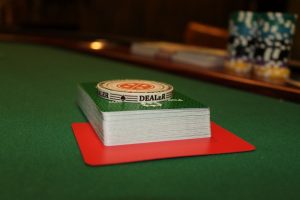 There are many differences between poker and Minesweeper. One of them is that a poker player is not forced to start playing with a blank slate. We have access to maps that other people have already conquered. Articles, videos, books, communication with poker friends, or simply reviewing hands—all of this gives us valuable insights into how other players' minds are structured. Although just watching won't enable us to mimic them (no amount of hours watching Phil Galfond will make you play like him), it allows us to see the overall structure and organization of their game. This helps us understand what a good game map looks like, what it is composed of, and how different elements are interconnected. Instead of blindly throwing darts at a blank board, observing other players allows us to understand where and how everything should roughly be placed and what the final result looks like.
There are many differences between poker and Minesweeper. One of them is that a poker player is not forced to start playing with a blank slate. We have access to maps that other people have already conquered. Articles, videos, books, communication with poker friends, or simply reviewing hands—all of this gives us valuable insights into how other players' minds are structured. Although just watching won't enable us to mimic them (no amount of hours watching Phil Galfond will make you play like him), it allows us to see the overall structure and organization of their game. This helps us understand what a good game map looks like, what it is composed of, and how different elements are interconnected. Instead of blindly throwing darts at a blank board, observing other players allows us to understand where and how everything should roughly be placed and what the final result looks like.
So, another tip to improve your learning process: use existing blueprints to speed up the formation of your game. With existing sketches, you can learn much faster and direct the learning process in the right direction. Videos, articles, hand histories, and maintaining connections with other poker players will allow you to easily select effective blueprints. How can we gain the most knowledge from existing sketches?
Let's see how monkeys learn. In certain species, when a young monkey tries to learn how to crack a nut, the mother places her hands on the baby's hands. She then manipulates his hands to crack the nut correctly. This is called modeling. Instead of simply showing visually by cracking her own nut, the mother can model this action directly in the young one's mind using the simplest technique and muscle memory. This allows the young one to learn the correct way himself. Such modeling is much more powerful than visual demonstration because it is felt by the learner's body.
How can we use this in poker? The most widely known example is being coached by a stronger player or trainer. And this is for the simplest reason—it sticks in your body. When you are being coached, and the person coaching you tells you to make a check-raise, which you would never normally do, you learn much more effectively because it differs from simply reading the theory that in such and such a situation you need to make a check-raise. A simple button press (the whole table's feedback, seeing how the opponent thinks, agreeing on the timing, and he folds, and you win the pot) fills your mind with the possibility of making such a move next time. In other words, instead of using theory, your mind experiences everything practically. Of course, coaching usually involves more than just one check-raise. If someone coaches you for a long time, you will eventually absorb a completely different style, logic, and approach to poker. Understanding another person's mind will help you experience the poker blueprints in your body and connect his possibilities with your own.
Unfortunately, although sweating can be ideal for learning, real-time coaching will not always be  possible or even ethical. So, what can we do when we can't use it? We can simulate sweating. We will discuss this a bit later.
possible or even ethical. So, what can we do when we can't use it? We can simulate sweating. We will discuss this a bit later.
Also, another invaluable aspect of improving your mind maps is language. How someone talks about poker says a lot about how their mind is structured. Try to find the differences between Phil Galfond, Sauce, and Jungleman's discussions about poker hands in their instructional videos. What do they mention first? What concepts do they usually follow? What do they not talk about? By analyzing these things, you will understand more clearly how they think about poker and what they prioritize. Although these three players often come to the same conclusions when discussing certain hands, they have very different perceptions of how poker should be played. Start speaking the right language, and your understanding of poker will follow. Language is very important. And how do players learn to speak the poker language?
Monkeys are not the only creatures that teach their young by modeling actions. Humans do the same. When parents hear a child's story, they actively participate in helping him tell his story correctly. Children tend to just blurt out facts; they don't yet know how to create a coherent narrative. So parents help: “Why did Billy do that?”, “What happened to him then?”, “So what did you learn in the end?”. The teacher forms a framework that helps the student create the necessary narrative structure.
Ideally, a competent poker coach will engage in forming such frameworks. “Why are you making this bet?”, “How do you think the opponent perceives your range?”, “What conclusion can we draw from the hand he just showed down?” and so on. This questioning is known as the Socratic method, which helps in learning, and it is effective because it leads the student towards the correct thought structure. However, such framework creation does not create a narrative. It only offers a “skeleton” on which the story can be placed.
Mind maps must be used in conjunction with exploration, risk-taking, and data collection. No matter how well you use your sketches, your poker game must be connected with experience. The road to success is paved with playing, playing, and more playing.
Haseeb Qureshi





